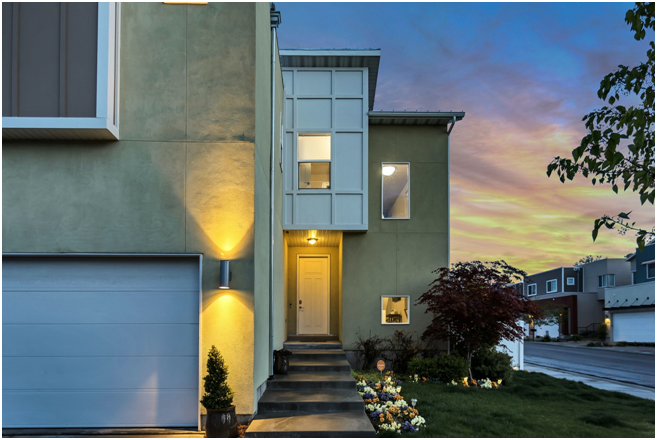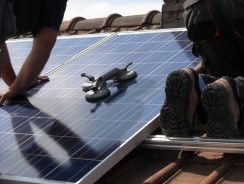
For decades, flat roofs have been one of the preferred design styles for homes in large North American cities where space is at a premium, and over the years engineers and architects have developed new and innovative ways to provide flat roof homes with superior protection from the elements.
This means that if your roof is reaching the end of its warranty and you want to get your flat roof spring ready you have a wide range of options available in terms of materials.
While many homeowners simply opt to stay with the same materials they currently have on their roof, it is worth exploring the alternatives to find out if a more modern type of roof wouldn’t be better suited to your needs.
To that end, here is a short run down of the three most common types of flat roof. Though you should consult with flat roofing experts if you want to make major changes, the following guide will help orient you to some of the general pros and cons of different styles.
1. Tar and Gravel
Also known as a built-up roof (BUR), tar and gravel is one of the oldest flat roofing styles still in use today.
Tar and gravel systems consist of layers or bitumen and reinforced fabric called “plies” that are applied directly to the roof deck and built up to the desired thickness before being covered with a protective layer of gravel.
These roofs offer straightforward protection from the elements, but have a few drawbacks:
· The plies add a lot of weight to the roof, putting strain on the entire structure
· Tar and gravel is difficult for homeowners to maintain
· Foot traffic can damage the surface, making it difficult to use the roof for recreation
While tar and gravel provides tried and true protection, if you want to turn your roof into a deck or garden, you might want to switch over to a different style.
2. Modified Bitumen
Modified bitumen is similar to tar and gravel, but are specifically designed to protect against harsh climactic conditions and thermal shocks. Modified bitumen reinforces base sheets and plies with tough asphalt membranes that are heat welded to provide a watertight seal before being treated with UV-resistant surfacing for added protection.
While modified bitumen provides great value, this style is susceptible to surface damage caused by punctures and vibrations, so it will need to be inspected seasonally to ensure it hasn’t been ripped or torn.
3. EPDM Membrane
EPDM is a type of versatile rubber roofing membrane that has become popular for both residential and commercial buildings. As a single-ply membrane, it is perfect for low-slope flat roofs, and it is often ballasted with gravel for extra protection.
While EPDM is affordable and easy to install, it can contract over time, opening up gaps between sheets that will need to be re-sealed if they are to be kept from leaking.
One of the greatest advantages of flat roofs is the variety of materials that can be used. If you have been having issues with your current roof and want to consider an upgrade, get in touch with professional roofers to explore alternative materials that can keep your flat roof watertight.









Author
Homesgofast com
Homesgofast.com is an international real estate portal and news source for Google news. Publishing international real estate, finance, homes and travel-related news and blogs for a targeted audience since 2002. Each news item is circulated to thousands of potential readers each day and is also available to the millions of people who sign up for Google news alerts. Find homes offered for sale and to rent direct from owners and some of the best real estate agents from over 35 countries